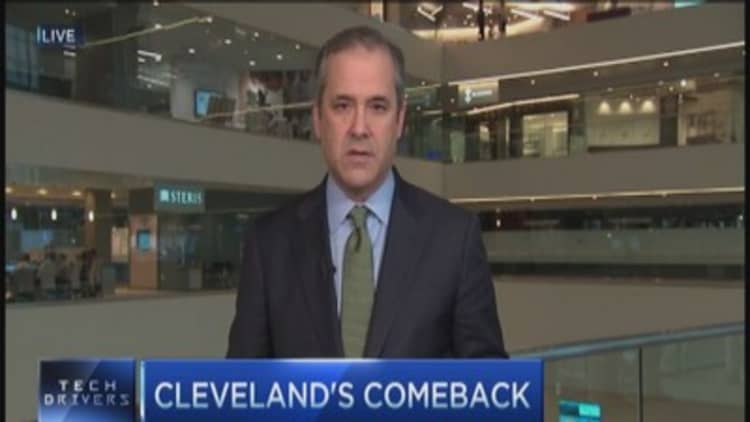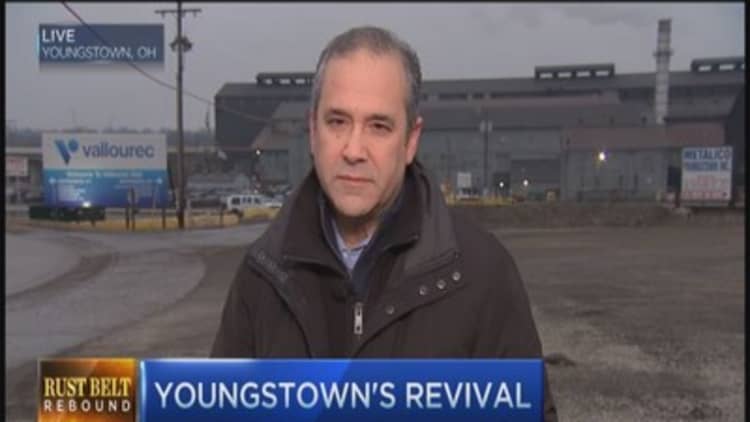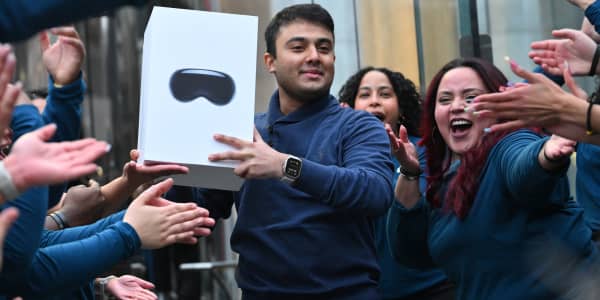


Born and raised in Cleveland, industrial designer and entrepreneur Mike Maczuzak started his firm SmartShape Design in the late 1980s amid the early end stages of steel, rubber, and plastic manufacturing in Northeast Ohio.
The loss of heavy manufacturing hit the lifelong Ohio resident hard—manufacturing employment down more than a third—but the rise of the health care industry has offered a much-needed replacement.
"In the last 25 years, we've seen a lot of manufacturing leaving our region and our country," said Maczuzak, but fortunately for Cleveland, the medical industry is really stepping in to save us."
Maczuzak credits the Cleveland Clinic's breakthroughs in heart care for attracting physicians, scientists, and perhaps most importantly innovation. According to BioEnterprise, a Cleveland business recruiting initiative, there are now more than 700 biomedical businesses in the city that have attracted more than $1 billion dollars in new investment since 2002.
While SmartShape's work can be seen on the shelves at Target or on display at the Consumer Electronics Show through its work with brands including Hoover, Hasbro, and Rubbermaid, more than half of SmartShape's design work is tied to that booming medical industry.
Read MoreOhio's rust belt rebound
Maczuzak has a large design studio in downtown Cleveland. With bright orange steel doors at the entrance to well-worn wood floors and exposed beams, the space begs for creativity. And that's exactly what Maczuzak's nearly 20 designers work at every day.
"We help our customers design new products, innovate and create new and better products," Maczuzak said. New product ideas may come from surgeons frustrated with an uncomfortable handle on a surgical tool or a hospital bed company looking to make a more efficient and safer way to move patients around a hospital.
He's also able to host focus groups in the studio with two-way mirrors to get honest feedback from doctors about how a re-engineered tool is functioning or where improvements need to be made.
Though Cleveland's economy has been on the mend, one of SmartShape's major clients and the major mover in the city's medical renaissance—the Cleveland Clinic—is cutting its budget and its workforce.
Still, Maczuzak said innovation will keep driving his hometown forward and SmartShape is planning to grow the medical side of its business. The company recently bought showroom space in Cleveland's Global Center for Health Innovation.
Maczuzak uses the space to showcase the design process, like the design evolution of a trigger-operated wire driver for orthopedic surgery. Now, when doctors, hospital administrators, or even the general public visit the showroom, they can see the transformation of an older model to a redesigned version and all the variations in between. SmartShape's space also shows a model of an MRI machine and orthopedic surgery table it redesigned to make more efficient.
"We're just getting started," Maczuzak said. "We have that great foundation with institutions like the Cleveland Clinic and University Hospital. So many ideas and innovations that come from the doctors and users of the technology. I see a lot of opportunity for the medical industry in Cleveland."





